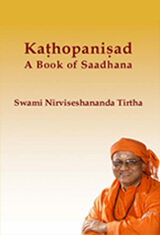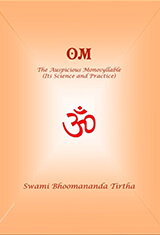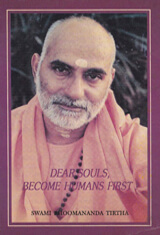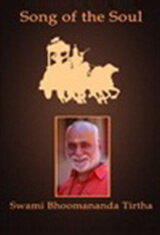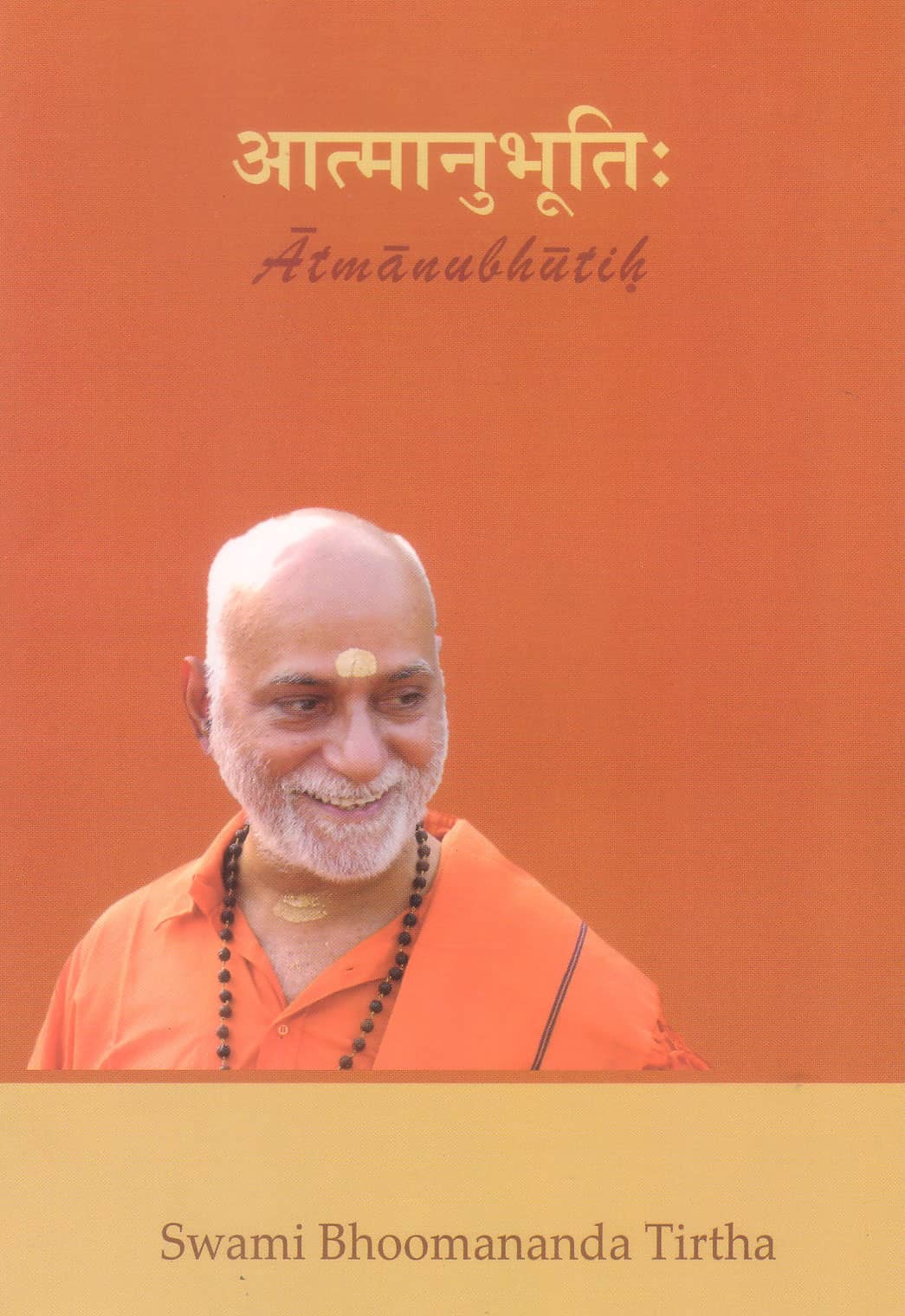Resources
5 | On Bhagavad Gita | How to remain unaffected amidst joys and sorrows
Swami Bhoomananda Tirtha

No doubt, Bhagavad Gita is a war-field dialogue; but its contents and message are mento-intellectual and are applicable to all – to every man and woman placed anywhere, in any situation, interacting with anything in this world.
Dear and blessed souls:
Harih Om Tat Sat.
I am continuing from where I stopped.
The real and the unreal, Sat & Asat
In the next verse (2.16), Krishna is quoting the Knowers of Truth. In fact, all the truths, our scriptural texts reveal, are from the wise and enlightened. Krishna is only reproducing what our scriptural texts have revealed, a point immensely relevant to the context of spiritual teaching and learning. Listen to what Krishna says:
“Arjuna, hear me attentively. We are dealing with and discussing human life and the experiences it brings. As I already said, our life is experiential and all experiences are inner, resting solely upon the mind. The only way to delve within and unearth the truth about the inner presence is to evolve adequate reasoning, introspection and apply it steadfastly. It is in this context that I discuss Sat and Asat.”
The word Sat denotes the Real, that which exists ever the same. Asat is its opposite. It denotes what does not exist at all. If this is so, the Sat will never cease to exist or disappear. On the other hand, Asat, the unreal, will never come into expression also. The difference between the two, Sat and Asat, is clearly ascertained by the Knowers of Truth, says Krishna. He is only citing the Knowers.
What does it imply? Spiritual wisdom is not anything new. It was already prevalent in the land, right from immemorial times. Krishna only presents it in the context of Mahabharata War. That is all. But that makes a great deal of difference.
Knowledge is always based on comparison and contrast. Unless there is enough to compare and contrast, our mind and intelligence will not be able to evolve knowledge that can help us lead our activity and interaction.
The concepts of the Real and Unreal are also evolved by the intelligence to facilitate and guide our understanding of life and world. Let us see what Krishna wants Arjuna and also others like him to do with these concepts. He speaks about the difference between Sat and Asat, just after explaining that life is interactional, and all the interactions result only in sukha-duhkha alternates, which do not last for long. For, every day at the end of wakeful interactions, all go to sleep for nearly half the wakeful duration. In sleep neither sukha nor duhkha has any prevalence. Apparently both dissolve completely in oneself, say in the sleeper, the sleeping Self, the ‘I’.
Sukha and duhkha are not real
Apply the Sat-asat distinction to sukha and duhkha. Is either of them real at all? Obviously, no! Why? Because each subsists for a short while and is followed by the other. Both alike are clearly asat indeed. If asat, can either prevail at all? For, we just said, asat cannot have any expression at all!
Sukha and duhkha are not Sat, and they are equally not asat also! They somehow seem to be. As what shall we call them, identify them? Asat cannot be manifest at all. So, how to explain the display of sukha-duhkhas? There must be something acting as a substratum which displays sukha and duhkha, with a view to reveal itself, the unchanging substratum. But for sukha-duhkhas, this inner substratum cannot be thought of or implied at all!
When sukha surfaces, it is experienced. You the ‘I’, is its experiencer. When the experienced sukha vanishes, the experiencer does not vanish. It (or ‘I’) survives to experience the succeeding duhkha. Thus, the ‘I’ experiencer survives ever, and is present in sukha and duhkha alike. The ‘I’, the Self, is the substratum and sukha-duhkhas are its manifestation alone. It is like the dream the sleeper displays in himself. None of the dream objects is verily existing. The sleeping ‘I’ alone makes them felt. In all such manifestation, the substratum alone is true and the manifestation is untrue, asat. Asat does not mean it is not felt. It is first of all felt. But, on analysis, it becomes flimsy, illusory, as is the dream.
The substratum, the Self alone, is
By bringing the contrast between the sat and asat, Krishna has clearly shown that sukha-duhkhas, though experienced by us, have no real status. Like dream, they are experienced for a while, that is all. What they really point to is their substratum, namely the ‘I’, the Self.
See, from where did we start? First of all, Krishna said life is interaction. Interactions are caused by our senses; they also rest on senses. The interactions are but fivefold. They are further reduced to two mental responses, namely sukha and duhkha. Sukha-duhkhas are asat, unreal. They are manifested by Sat, their substratum, namely the Self. Does it not really mean that the entire world objects causing sukha-duhkhas are at the sensory level alone and are equally asat? Their substratum, namely the Self alone, is. What a splendid finding, an amazing reasoning, equally a conclusive truth!
My dear readers, do not forget the fact that all this discussion is taking place in the battlefield of Kurukshetra, Krishna standing on the chariot, holding the reins of four horses, and Arjuna seated behind him, suspending the entire discharge of arrows! How spectacular and bewildering the whole instance is!
Mind and intelligence alone can bestow Shreyas
Remember, Arjuna concluded his confession saying grief was scorching his senses and Krishna should instantly cool and comfort him. He also said that what he was looking for was neither the fight nor victory in it. What he first and last wanted was shreyas, spiritual felicity.
Krishna is conscious of Arjuna’s request. He tries to fulfill it in ample measure. Shreyas does not come from an object outside or any external physical or sensory activity. It is always a quest of the mind and intelligence. Mind and intelligence alone can bestow it. Krishna, by his words of wisdom, makes Arjuna thoughtful, his intelligence greatly rational and introspective. Arjuna is quite inspired. He is absorbing earnestly all that Krishna conveys. What a splendid togetherness, its amazing fruition!
Sukha and duhkha verily represent, so far as the seeker is concerned, the grand aggregate of worldly objects. An analysis and enquiry into them take one to the ‘I’, the very substratum of all existences and phenomena.
Universal message of Bhagavad Gita
Dear souls, this is what happens to every intelligent human when he takes up an enquiry into his life and the experiences it brings forth. Grasp this well and gain sufficient wisdom and stability not to be afflicted by anything in this world, instead get enriched and stabilized every time. This is the universal message of Bhagavad Gita. That is why, it has remained ever fresh, since it transpired in Kurukshetra, 5000 odd years ago.
The more and more the seeker knows that sukha-duhkha alternates are no more than a ‘mere display’ and what displays them is the unchanging ‘I’ within, he becomes stabler, more peaceful and poised. His whole interactions will become smooth, undisturbed. A deep note of harmony will prevail in his mind, making him live and move in this world unaffected by everything and consequently he will be able to contribute laudably to the welfare of the society every time.
Life becomes more a natural expression of ease, pleasantness and harmony than any severe challenge or persecution. The entire key for this kind of spiritual inner fulfilment lies in analyzing our interactional life in the manner in which Krishna, Bhagavad Gita and Vyasadeva describe.
No doubt, Bhagavad Gita is a war-field dialogue; but its contents and message are mento-intellectual and are applicable to all – to every man and woman placed anywhere, in any situation, interacting with anything in this world. The message is applicable to the domestic, professional and societal fronts alike.

“Sukha-duhkhas, though experienced by us, have no real status. Like dream, they are experienced for a while, that is all. What they really point to is their substratum, namely the ‘I’, the Self.”
“Sukha and duhkha verily represent, so far as the seeker is concerned, the grand aggregate of worldly objects. An analysis and enquiry into them take one to the ‘I’, the very substratum of all existences and phenomena.”
“The more and more the seeker knows that sukha-duhkha alternates are no more than a ‘mere display’ and what displays them is the unchanging ‘I’ within, he becomes stabler, more peaceful and poised. ”
you might be interested in

Swami Nirviseshananda Tirtha
156 – by Swami Nirviseshananda Tirtha – Kaivalya Upanishad – 15

Swami Bhoomananda Tirtha
04 – Bhagavad Gita – Swami Bhoomananda Tirtha – Meeting the Challenges of Modern Life

Swami Bhoomananda Tirtha
235 – Resolving Conflicts & Discovering the Source of Joy – 3 I Swami Bhoomananda Tirtha

 2602 views
2602 views

 Add to Favorites
Add to Favorites Add to Reading List
Add to Reading List


